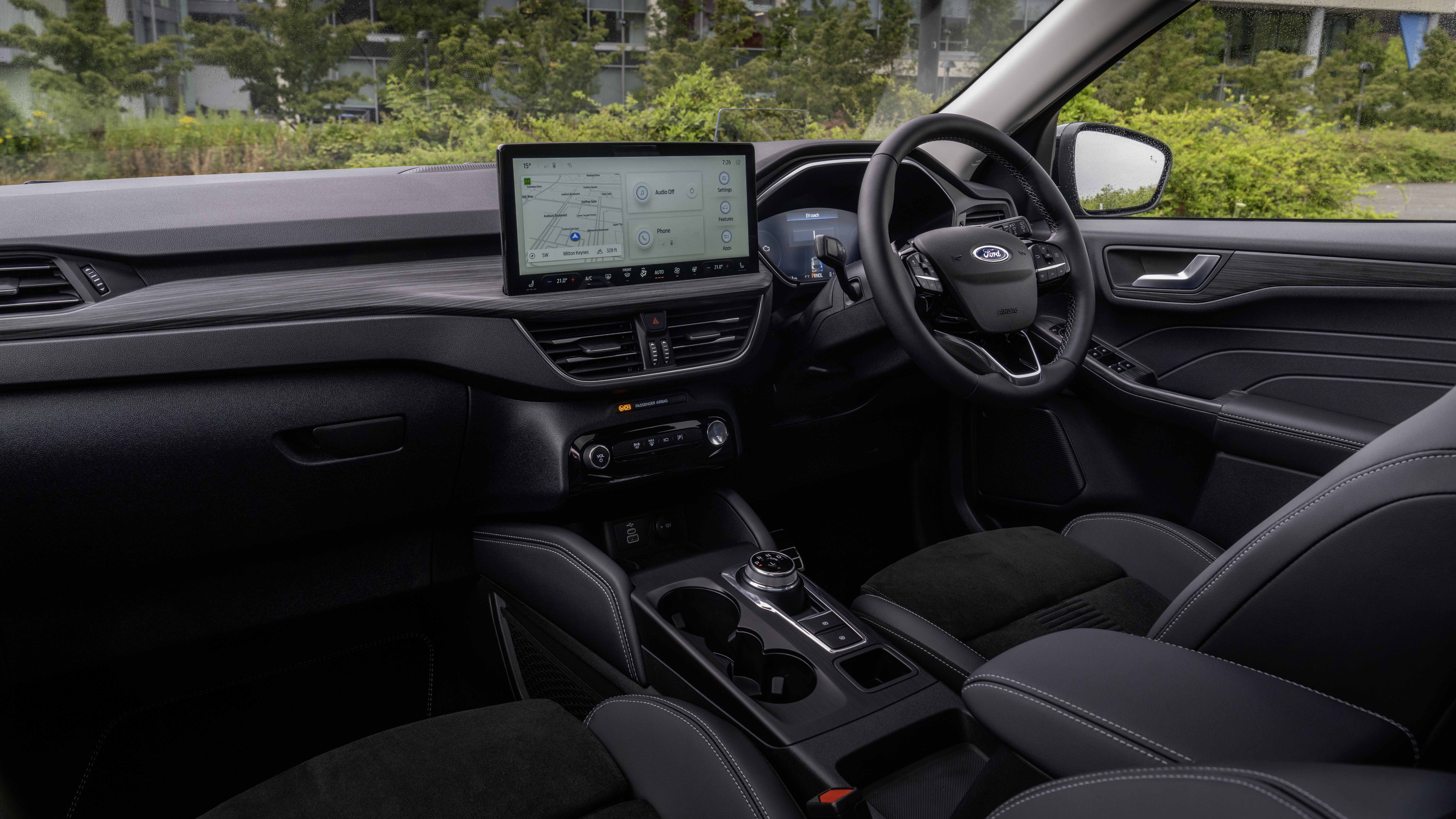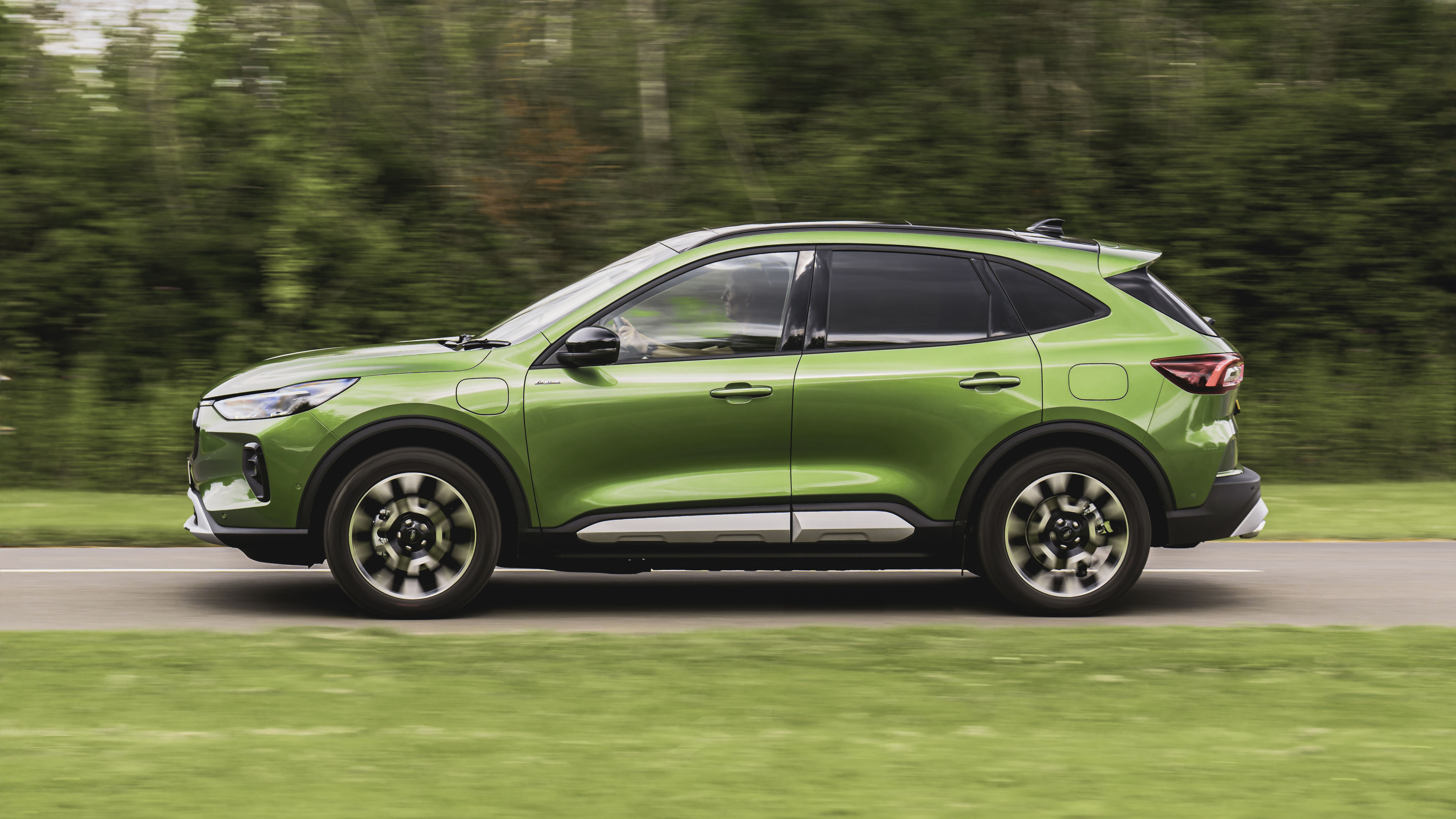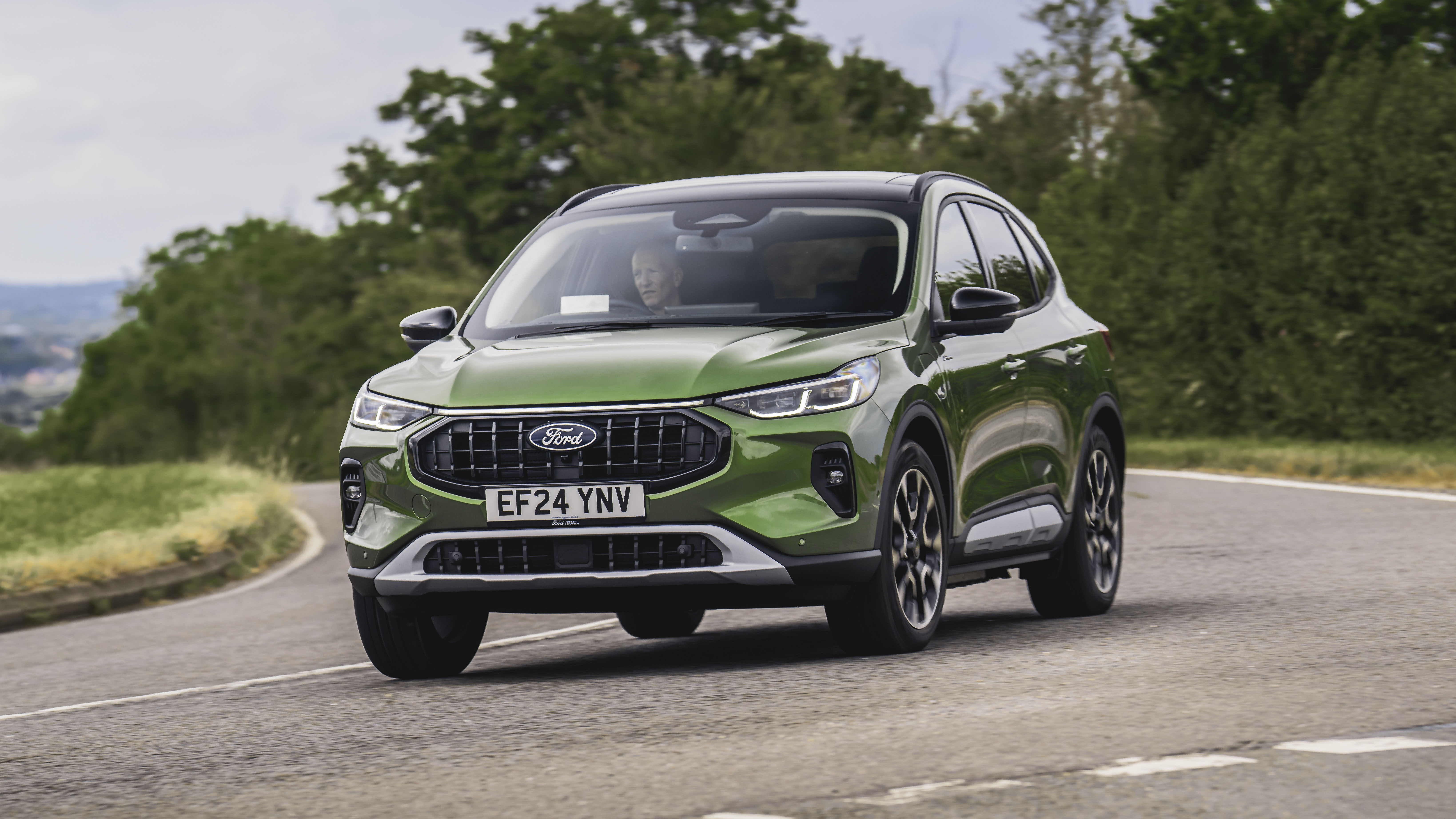
Buying
What should I be paying?
The Kuga starts at £32,095 for the base petrol. The FHEV costs from £38,565 and £40,865 in front-wheel drive and all-wheel drive respectively. Meanwhile the full plug-in hybrid costs from £40,555. Available trims include Titanium (only available with the base petrol), ST-Line, Active and ST-Line X.
What are the kit choices like?
Base-spec Titanium models get silver 17-inch alloys, LED headlights, taillights and daytime running lights, silver roof rails, plastic side cladding, heated windscreen, 12.3-inch digital instrument cluster, 13-inch touchscreen, front and rear parking sensors and much more besides. Not so base-spec after all.
One up ST-Line models are schporty focused and get metallic 18-inch alloys, red brake callipers, ST-Line bodykit, and twin sports exhausts. Inside the theme continues with a flat-bottomed steering wheel, sports seats with black neosuede inserts and contrasting red stitching, plus alloy pedals.
Active trim has a more rugged/adventurous look and includes black machine-finished 18-inch alloys, active lifted suspension, black mirror caps, and roof rails. You get the gist. Inside, there’s Active seats with black neosuede inserts and grey stitching. Wasn’t going to be neutral coloured here, really.
Top of the ST-Line X models build on ST Line trim (shock) and get black machine-finished 19s, panoramic roof, front and rear heated seats and steering wheel. As you’d expect all versions come with Ford’s usual suite of safety systems, while buyers have 12 colours to choose between.
What's the best spec?
Most UK buyers opt for ST Line trim, though if you need something more hard-wearing we’d go for Active trim, which is pretty comparable on price.
On the engine front, we’d likely skip the base petrol and go hybrid: if you have no access to a plug at home or work, the FHEV is arguably the better variant (we don’t reckon you need to look beyond front-wheel drive, either).
However if you do have access to power, and make a lot of short trips, check out the PHEV instead. This is a car most commuters could run as an EV and only wake the petrol engine on longer weekend trips with the family in tow.
Featured

Trending this week
- Car Review
BMW iX3






